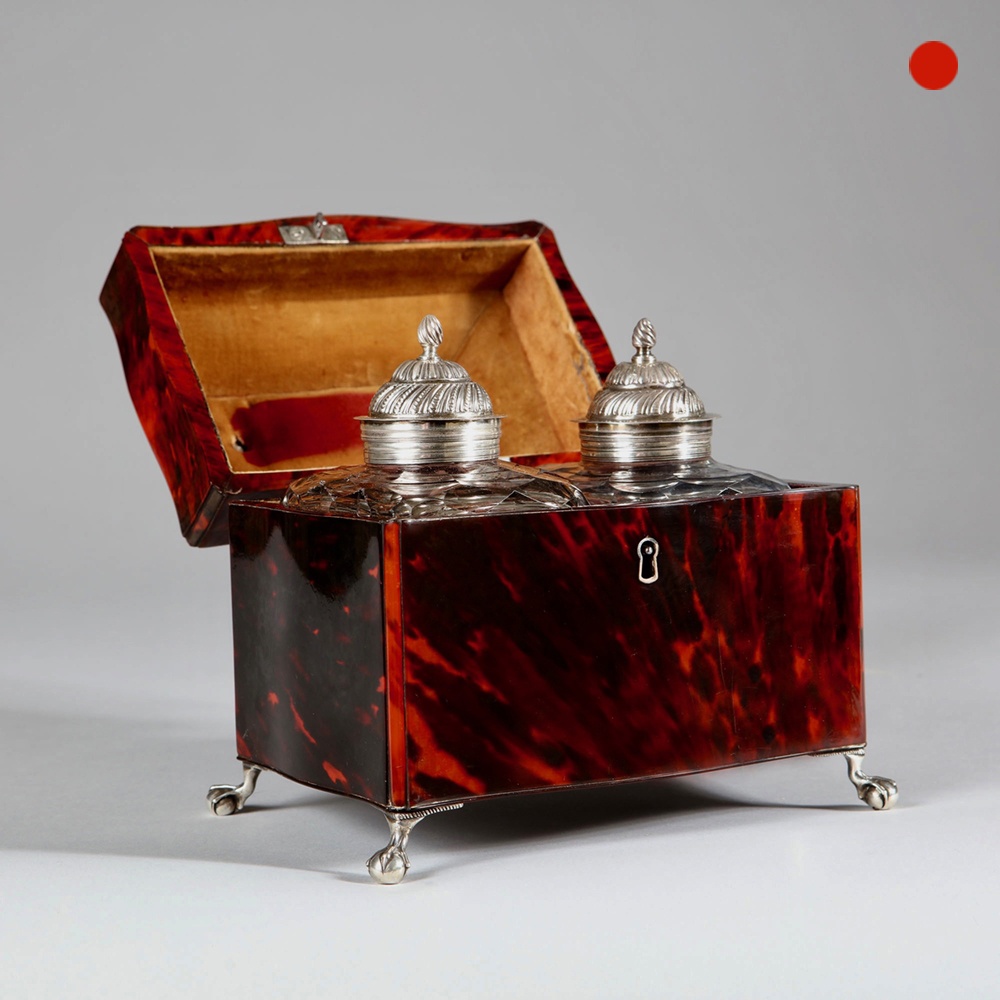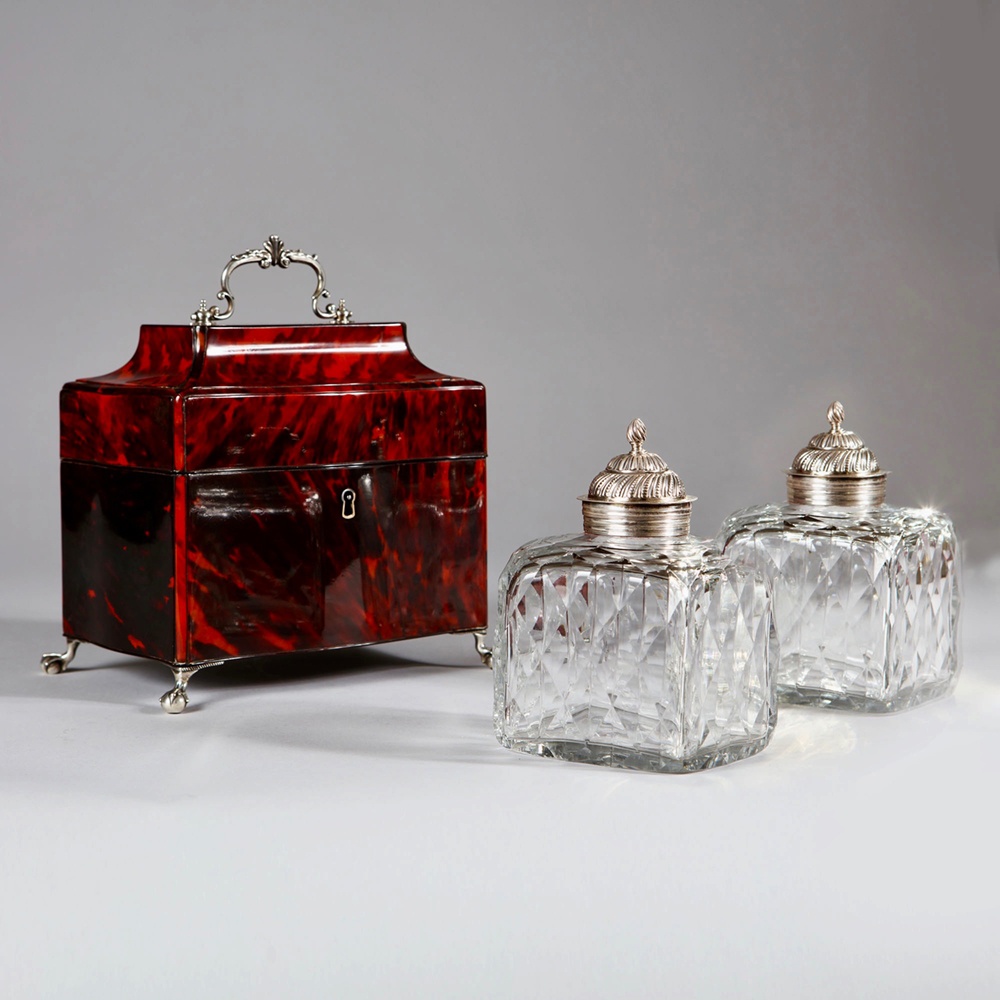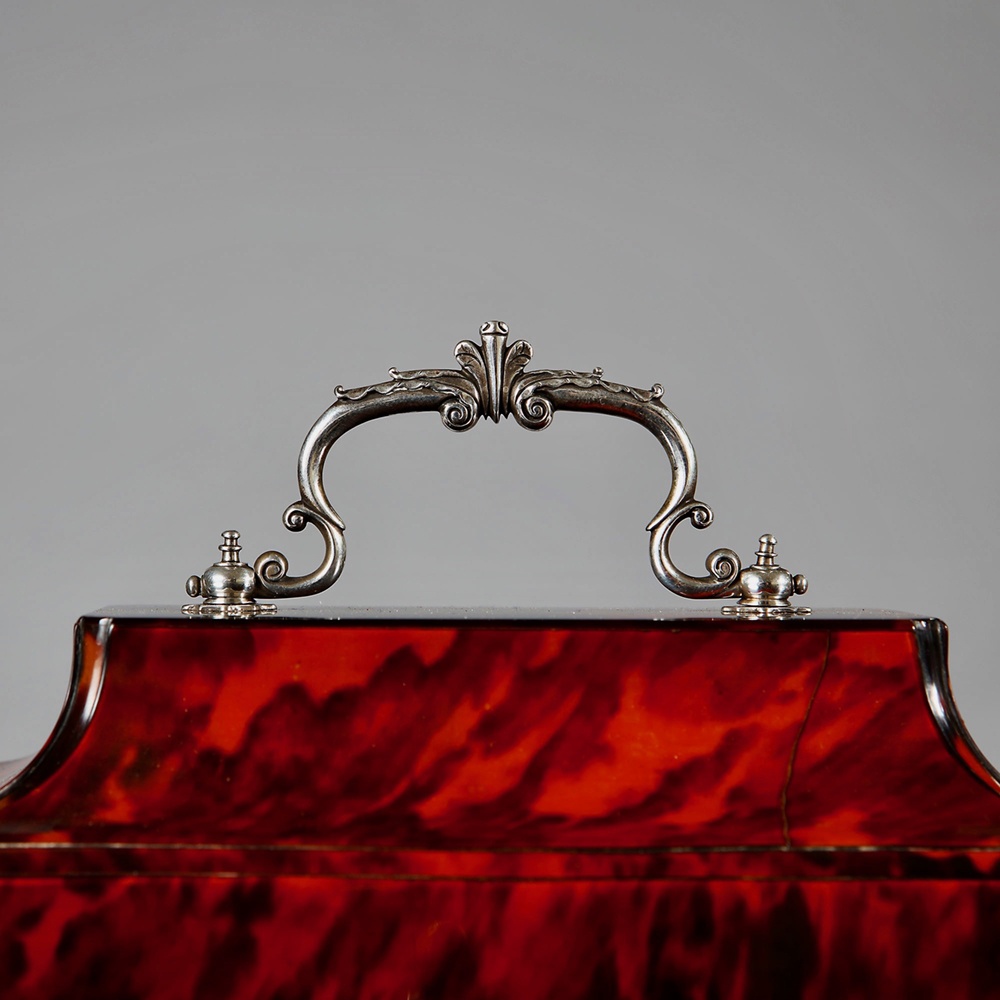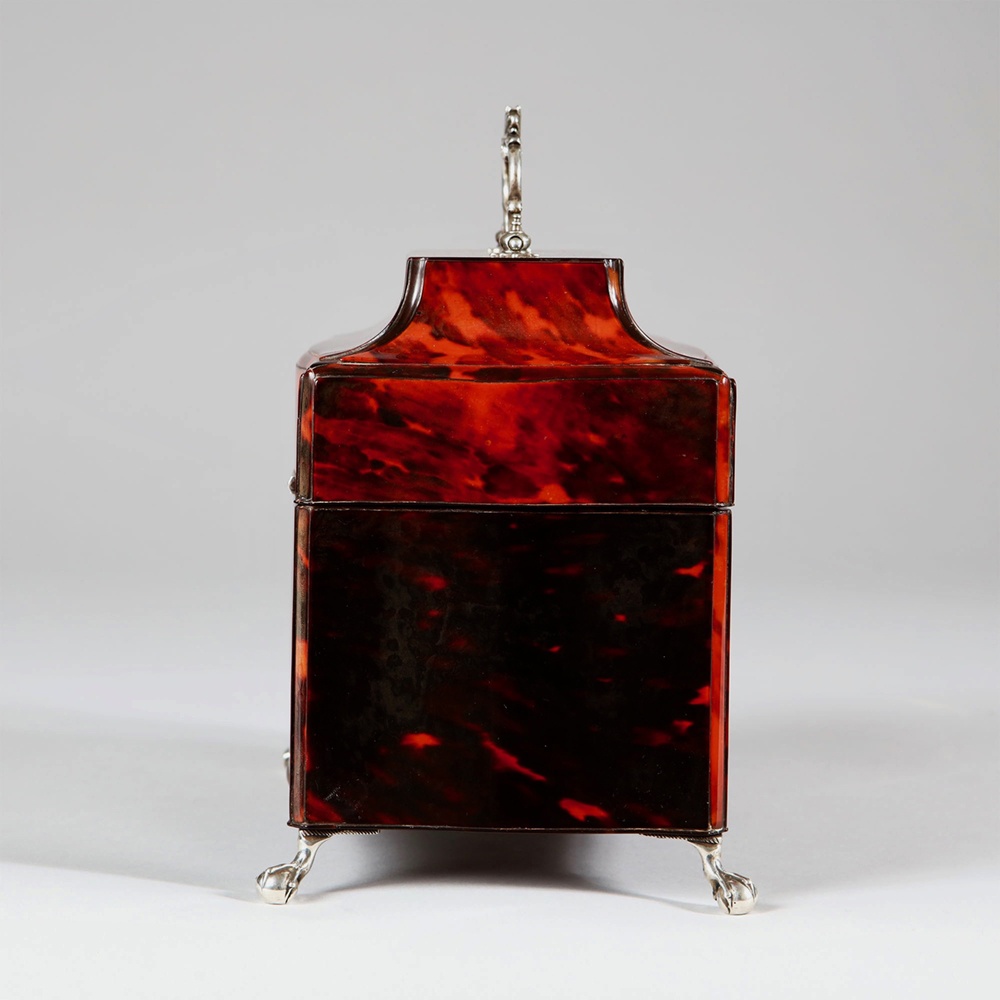George III Red Tortoiseshell Tea Caddy
1775 England
SOLD
Request Information
Follow Us
George III Red Tortoiseshell Tea Caddy
A rare exquisitely shaped red tortoiseshell tea caddy, serpentine to all four faces with a pagoda top. The beautifully worked silver handle depicts the Prince of Wales feathers and it is raised on fine ball and claw feet of silver. The interior is fitted with two cut glass caddies with silver Repoussé lids topped with flames.
The term ‘caddy’ is believed to have derived from the word ‘catty’, which is the Chinese equivalent to just over a pound (Lb).
Condition
Original condition with historic repairs to tortoiseshell.
Provenance
Private collection Royal Borough of Kensington and Chelsea
Literature
Dimensions
PREVIOUSLY SOLD
No Results Found
The page you requested could not be found. Try refining your search, or use the navigation above to locate the post.
No Results Found
The page you requested could not be found. Try refining your search, or use the navigation above to locate the post.
YOU MAY ALSO LIKE
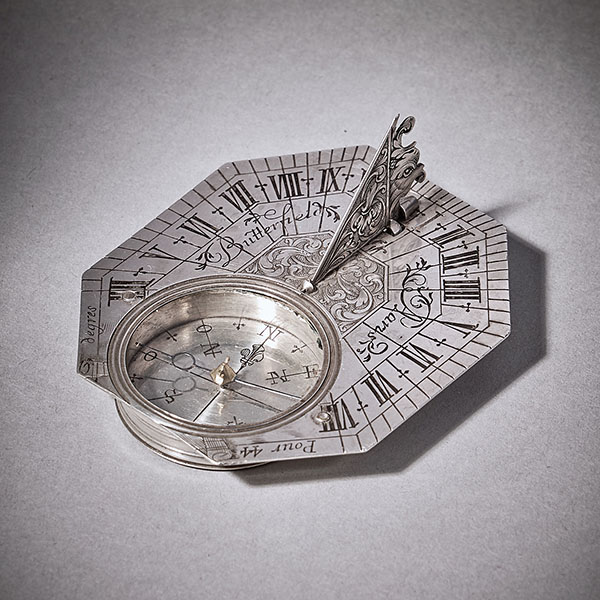
Rare Silver Pocket Sundial and Compass by Michael Butterfield, Paris, circa 1700
Rare Silver Pocket Sundial and Compass by Michael Butterfield, Paris, circa 1700 £4,900 Follow UsRare Silver Pocket Sundial and Compass by Michael Butterfield, Paris, circa 1700 A beautiful, rare solid silver Anglo-French octagonal pocket...

Engraved Eight-Day Striking and Repeating Carriage Clock by Perregaux Au Locle
Engraved Eight-Day Striking and Repeating Carriage Clock by Perregaux Au Locle Follow UsEngraved Eight-Day Striking and Repeating Carriage Clock by Perregaux Au Locle The superb engraved gilt gorge brass case has facetted glass panels to all...

Fine George III 18th Century Period Mahogany Longcase Clock by Tomas Fowle
18th Century Period Mahogany Longcase Clock by Tomas Fowle £12,995 Follow Us18th Century Period Mahogany Longcase Clock by Tomas Fowle A fine George III period mahogany longcase clock of excellent colour, patination and proportions, circa...

17th Century Figured Walnut and Seaweed Marquetry Lace Box
17th Century Figured Walnut and Seaweed Marquetry Lace Box £3,600 Follow Us17th Century Figured Walnut and Seaweed Marquetry Lace Box A fine and extremely rare figured walnut and seaweed marquetry 'lace box', circa.... let’s break it down -...

19th Century Repeating Gilt-Brass Carriage Clock by the Famous Drocourt
19th Century Repeating Gilt-Brass Carriage Clock by the Famous Drocourt £5,600 Follow Us19th Century Repeating Gilt-Brass Carriage Clock by the Famous Drocourt A superb repeating carriage clock with a gilt-brass gorge case by the famous maker...

17th-Century Hague Clock Signed by Pieter Visbagh, circa 1675
Small 17th Century Hague clock made c. 1675 by Pieter Visbagh, who was apprenticed by Salomon Coster. The latter made the first pendulum clock according to the instructions of Christiaan Huygens, the internationally renowned scientist who developed the idea of applying a pendulum to a clock movement.

Rare Silver Pocket Sundial and Compass by Michael Butterfield, Paris, circa 1700
Rare Silver Pocket Sundial and Compass by Michael Butterfield, Paris, circa 1700 £4,900 Follow UsRare Silver Pocket Sundial and Compass by Michael Butterfield, Paris, circa 1700 A beautiful, rare solid silver Anglo-French octagonal pocket...

Engraved Eight-Day Striking and Repeating Carriage Clock by Perregaux Au Locle
Engraved Eight-Day Striking and Repeating Carriage Clock by Perregaux Au Locle Follow UsEngraved Eight-Day Striking and Repeating Carriage Clock by Perregaux Au Locle The superb engraved gilt gorge brass case has facetted glass panels to all...

Fine George III 18th Century Period Mahogany Longcase Clock by Tomas Fowle
18th Century Period Mahogany Longcase Clock by Tomas Fowle £12,995 Follow Us18th Century Period Mahogany Longcase Clock by Tomas Fowle A fine George III period mahogany longcase clock of excellent colour, patination and proportions, circa...

17th Century Figured Walnut and Seaweed Marquetry Lace Box
17th Century Figured Walnut and Seaweed Marquetry Lace Box £3,600 Follow Us17th Century Figured Walnut and Seaweed Marquetry Lace Box A fine and extremely rare figured walnut and seaweed marquetry 'lace box', circa.... let’s break it down -...

19th Century Repeating Gilt-Brass Carriage Clock by the Famous Drocourt
19th Century Repeating Gilt-Brass Carriage Clock by the Famous Drocourt £5,600 Follow Us19th Century Repeating Gilt-Brass Carriage Clock by the Famous Drocourt A superb repeating carriage clock with a gilt-brass gorge case by the famous maker...

17th-Century Hague Clock Signed by Pieter Visbagh, circa 1675
Small 17th Century Hague clock made c. 1675 by Pieter Visbagh, who was apprenticed by Salomon Coster. The latter made the first pendulum clock according to the instructions of Christiaan Huygens, the internationally renowned scientist who developed the idea of applying a pendulum to a clock movement.



